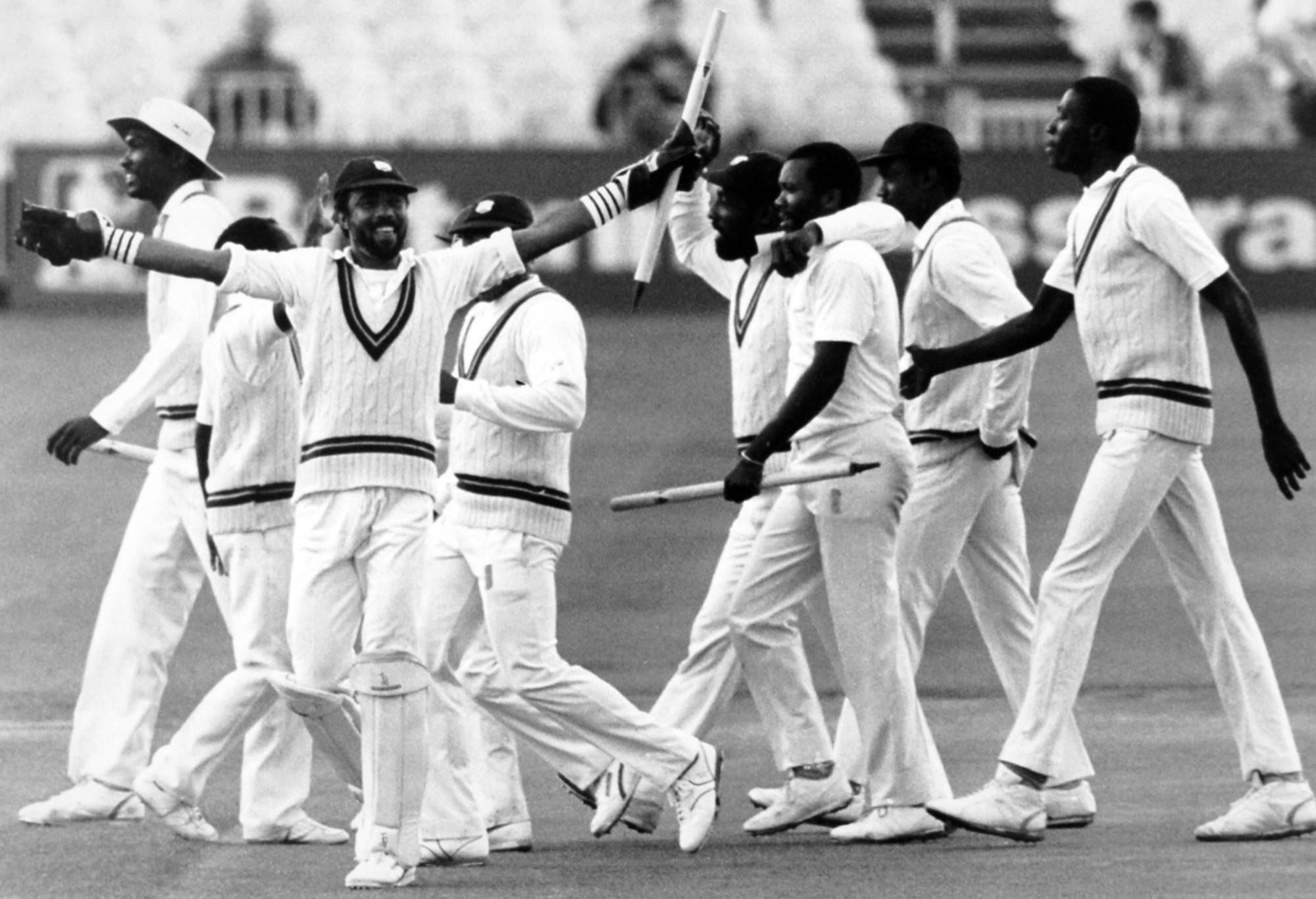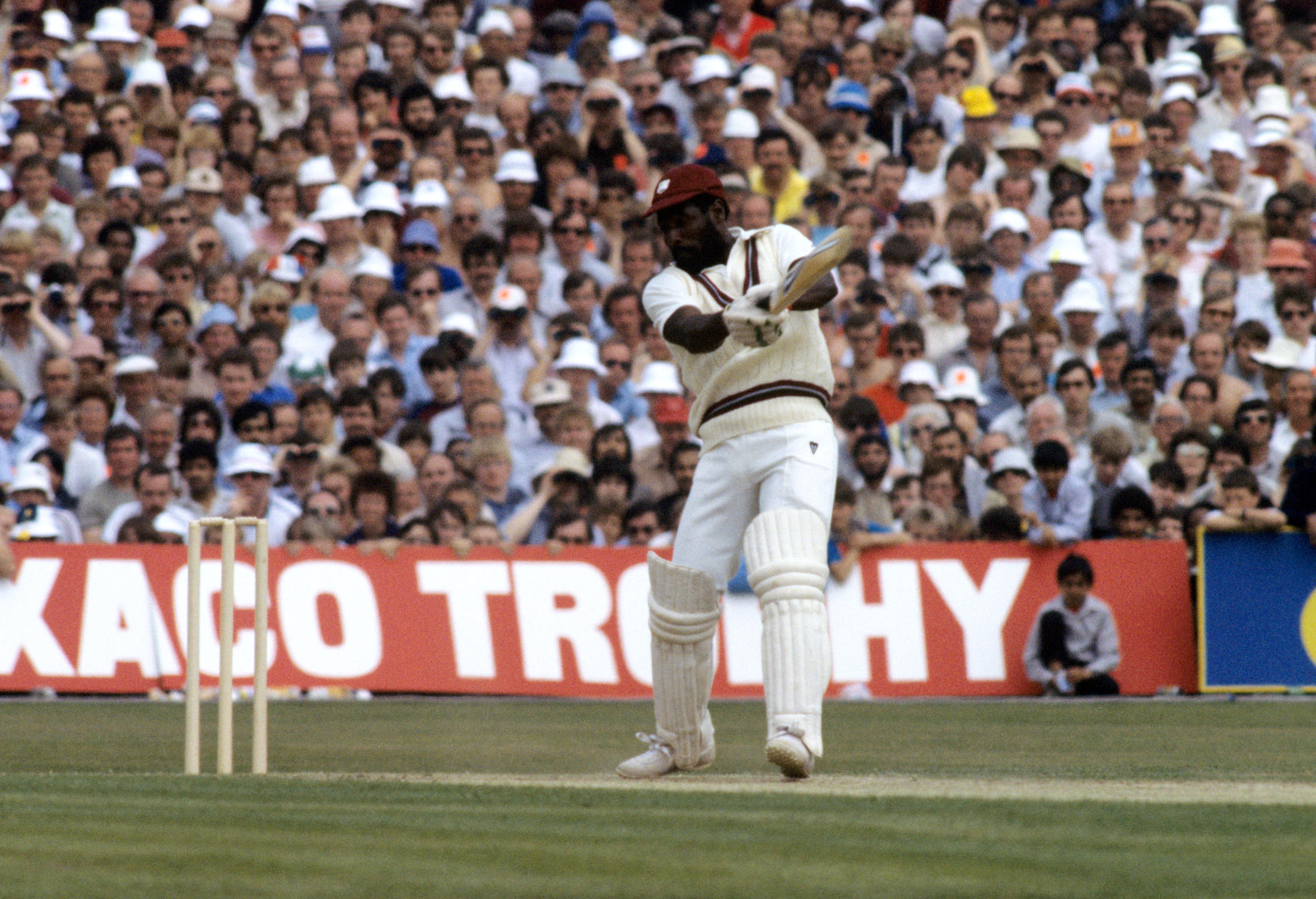We all know about the decline of the once-great West Indian team of the 1970s and ’80s.
They were scary and hostile and brilliant and entertaining.
It could be argued that the retirements of Joel Garner and Michael Holding in 1987 was the start of the decline. But it may have been even earlier.
Both Balfour Patrick Patterson and Tony Gray made their Test debuts in 1986. Wicketkeeper Jeff Dujon said Patterson, who as everyone knows goes by the name Patrick, was the quickest he kept to. Standing six feet six, Gray played five Tests across 86–87; three in the sub-continent and two in New Zealand. In those five Tests, he took 22 Test wickets at 17.13 while bowling with Malcolm Marshall and Courtney Walsh.
Gray and Patterson played together in Gray’s debut in Faisalabad in 1986. They combined for nine wickets, but they were outdone by Imran Khan and Wasim Akram who combined for 11 wickets in an 86-run victory to Pakistan.
Pakistan would go onto draw four three-Test series with the Windies between 1986-1990.
The only other loss Gray experienced was, bizarrely, in his final Test against New Zealand. He combined with six-foot eight Garner and ably backed-up by Marshall and Walsh, yet it wasn’t enough to prevent a Kiwis victory. Chasing a measly 32 in the fourth innings, the Windies let rip but the Kiwis limped painfully to victory at 5-33. Marshall’s bowling average in 1987 was 32.
Winston Benjamin debuted in 1988, but he only played 21 Tests until 1995. His record is very much favoured by his 32 wickets in five Tests against Pakistan (all in the Caribbean) and one Test against Sri Lanka.
The other player to debut in 1988 was six-foot five Trinidadian Ian Raphael Bishop. To introduce himself, he fractured Kris Srikkanth’s forearm in an ODI. In his first 11 Tests, all with Curtly Ambrose, his express pace and steepling bounce delivered 53 wickets at 20.6.
His 11th Test was against Pakistan. Get this: it was the Windies with Bishop, Ambrose, Marshall and Walsh against Pakistan’s Imran, Waqar Younis and Wasim. Yet despite this firepower, somehow this Test was a draw.
For the Windies, 1990 was – in a word – interesting. Marshall played five Tests and took only nine wickets at 33. But Bishop had his best Test year with 37 wickets in seven Tests at 19.48. Patterson was losing his rhythm by this time and he only played one Test for the year taking one wicket.
Rebel tourist Ezra Moseley made his debut at the age of 29 but could only manage six wickets from two Tests. Had it really only been a few years since Garner and Holding left the game? But things were about to improve.
In 1991, Patterson was back to his destructive best in the first four Tests against Australia. In that series, he took 18 wickets (same as Ambrose) and his bowling average of 22.72 was only second to Marshall (20.8).
The Windies cantered home in the second and fourth Tests. Up 2-0, Patterson only dismissed Geoff Marsh and Ian Healy in the dead rubber fifth Test as the Aussies won comfortably. After the victory, from Allan Border down there was a simmering belief among the Australian’s that they’d soon topple the mighty Windies. They wouldn’t have to wait all that long.
Then it happened: the fast bowler’s curse. Bishop’s back went in early 1991 and he didn’t return until late 1992 with a remodelled action.
After the home series against the Aussies, Patterson’s bowling became increasingly erratic. The Windies lost the first Test of their four-match series in England at Headingly. Patterson took no wickets in England’s second innings.
He was also claiming fewer top-order wickets consistently, and in the fourth and final Test he leaked seven runs an over in England’s second innings (Ambrose went for six RPO while Marshall and Walsh went for two RPO. Weird).
England won by five wickets and the great Malcolm Marshall hung up his boots. What a player.

The West Indies during their 1980s glory days. (Photo by PA Images via Getty Images)
With Bishop out, it was up to Patterson to do his thing. But in 1992 Patterson was atrocious. Two wickets in his final two Tests at 105. His last Test wicket was Craig McDermott. Seemingly his mental health issues were starting to manifest.
So the Windies lost Marshall to retirement and Bishop to injury in late 1991, Patterson to form in 1992 and the jury was out on Winston Benjamin.
This was exactly the time they should have formed a murderous quartet with Ambrose and Courtney Walsh. Then Bishop broke down again five months later after 18 Tests and didn’t come back till 1995. He was a shadow of his former self.
Now, we should spare a thought for Richie Richardson. He took over the captain’s armband in 1991. Viv Richards’ teams only had eight losses in the 50 Tests at the helm. When Richardson played his last Test in 1995, his team had lost six out of 24 Tests.
Richards’ record as captain absolutely dwarfs Richardson’s: nearly twice as many Tests for almost the same number of losses. You know what they say about writing and the wall.
After Patterson was done and Bishop was still in rehab, the Windies called in another Benjamin – Kenny. He played one Test in 1992 and another in 1993. By 1994 he was the latest fast bowler with potential and was a good back-up for Ambrose and Walsh.
But K. Benjamin played two fewer Tests than Patterson and he was done by 1995. Let’s go back to Winston Benjamin. He played his final 10 Tests across 1994 and 1995 taking 22 wickets at 40. The Windies also tried Eldine Baptiste for 10 Tests (16 wickets at 35).

Sir Vivian Richards. (S&G/PA Images via Getty Images)
It worked pretty well cause they won every Test he played in. But Baptiste was a support bowler and fringe player rather than a strike bowler. So they went with six-foot eight Cameron Cuffy (15 Tests), Anderson Cummins (5 Tests), Ottis Gibson (2 Tests), etc. etc.
Patterson was lethal in his first few years, Bishop was a once-in-a-generation type. He would play the last of his 43 Tests in 1998; the final ten of those he took just 14 wickets at 48.57.
The unrelated Benjamins ended up playing 10 Tests together. Despite their best efforts, on their best days they weren’t as good as a rhythmic Patterson or a fit Bishop.
Do you want to know how many Tests Ambrose, Walsh, Bishop and Patterson played together? One.
One Test.
And it was against our own “if only” attack of McDermott, Merv Hughes and Bruce Reid at the Gabba in 1992 for a lousy draw. It was Patterson’s second-last Test and he went for five an over.
But just think about that: Ambrose, Bishop, Walsh and Patterson, with the Benjamins, Baptiste and Cuffy as back-ups, all fit and firing. It wouldn’t have stopped the decline, but they certainly would have stymied it.
And man, they would have been something to watch.
>Cricket News



%20(3).jpeg)




0 Comments